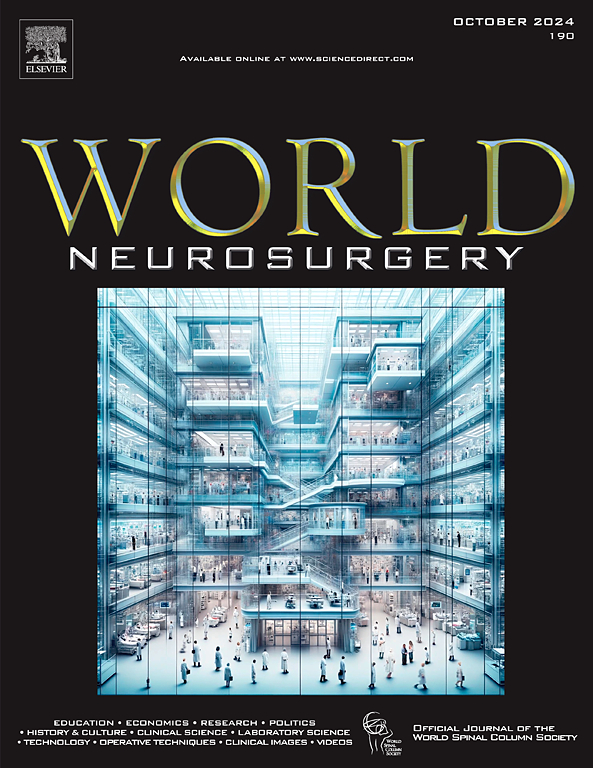Machine Learning in Predicting the Cognitive Improvement of Ventriculoperitoneal Shunt for Chronic Normal Pressure Hydrocephalus After Aneurysmal Subarachnoid Hemorrhage
IF 1.9
4区 医学
Q3 CLINICAL NEUROLOGY
引用次数: 0
Abstract
Background
Chronic normal pressure hydrocephalus (CNPH) is a recognized sequela of aneurysmal subarachnoid hemorrhage (ASAH). Ventriculoperitoneal shunt (VPS) is a conventional treatment for hydrocephalus, though its effectiveness for CNPH post-ASAH remains unclear.
Methods
We included ASAH patients with CNPH who underwent VPS surgery. Changes in the modified Rankin Scale (mRS) before and after surgery were analyzed to evaluate VPS benefits. The least absolute shrinkage and selection operator identified relevant variables and predictive models were constructed using 8 supervised machine learning algorithms to assess VPS benefit.
Results
Among 75 patients (39 males and 36 females), 48 (64%) benefited from VPS, while 27 (36%) did not. The beneficial group showed a longer disease course, higher cerebrospinal fluid (CSF) pressure, lower red and white blood cell counts in CSF, and lower modified Fisher (MF) and Hunt–Hess (HH) grades compared to the nonbeneficial group. Univariate logistic regression analysis indicated that disease course, CSF pressure, red blood cell/white blood cell (WBC) counts in CSF, WBC count in blood, MF grade, HH grade, and preoperative mRS were associated with favorable VPS outcomes. The extreme gradient boosting (XGB) model demonstrated the highest area under the curve of 0.946 and lowest residual error. A nomogram was subsequently developed and demonstrated a satisfactory performance.
Conclusions
VPS benefits in CNPH patients after ASAH were associated with disease course, CSF pressure, red blood cell/WBC counts in CSF, WBC count in blood, MF and HH grades, and preoperative mRS. The XGB model demonstrated optimal predictive performance, with an area under the curve of 0.946.

求助全文
约1分钟内获得全文
求助全文
来源期刊

World neurosurgery
CLINICAL NEUROLOGY-SURGERY
CiteScore
3.90
自引率
15.00%
发文量
1765
审稿时长
47 days
期刊介绍:
World Neurosurgery has an open access mirror journal World Neurosurgery: X, sharing the same aims and scope, editorial team, submission system and rigorous peer review.
The journal''s mission is to:
-To provide a first-class international forum and a 2-way conduit for dialogue that is relevant to neurosurgeons and providers who care for neurosurgery patients. The categories of the exchanged information include clinical and basic science, as well as global information that provide social, political, educational, economic, cultural or societal insights and knowledge that are of significance and relevance to worldwide neurosurgery patient care.
-To act as a primary intellectual catalyst for the stimulation of creativity, the creation of new knowledge, and the enhancement of quality neurosurgical care worldwide.
-To provide a forum for communication that enriches the lives of all neurosurgeons and their colleagues; and, in so doing, enriches the lives of their patients.
Topics to be addressed in World Neurosurgery include: EDUCATION, ECONOMICS, RESEARCH, POLITICS, HISTORY, CULTURE, CLINICAL SCIENCE, LABORATORY SCIENCE, TECHNOLOGY, OPERATIVE TECHNIQUES, CLINICAL IMAGES, VIDEOS
 求助内容:
求助内容: 应助结果提醒方式:
应助结果提醒方式:


